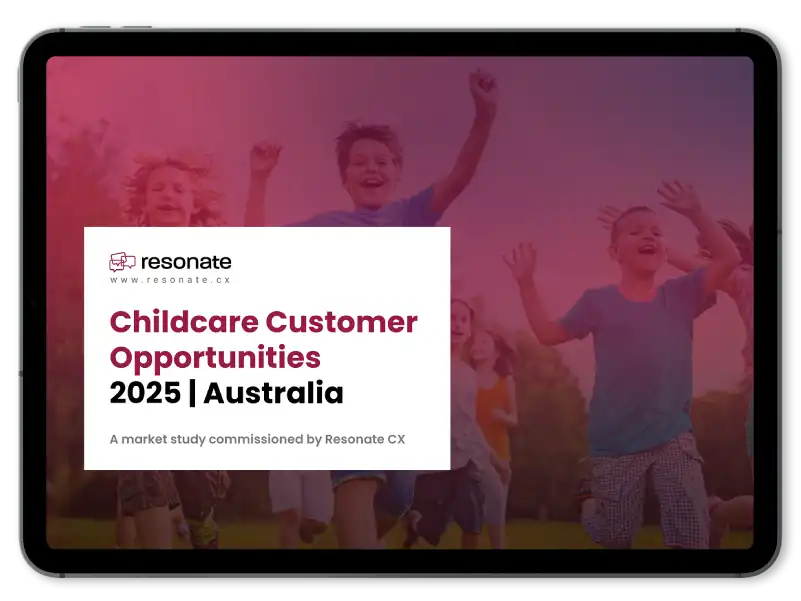Before a business can optimise customer journeys, it needs to have a good idea of what customers experience as they pass through the touchpoints and processes within its ecosystem. This is not always an issue for smaller organisations with a limited customer base, as decision-makers can use simple analytics or direct observation to gain insights into customer experience (CX).
However, as a customer base widens and operations become more complex, managing CX in this way becomes unsustainable, leading to uneven or negative experiences. Even in smaller businesses, direct observation and data analytics cannot tell the whole CX story, requiring customer satisfaction surveys and systematic sentiment analysis.
Regardless of a business’s size or objectives, customer satisfaction surveys are a fundamental tool for understanding and improving relationships with customers. When properly constructed, surveys can provide direct insights into CX, giving businesses valuable data from which all manner of processes can be improved.
Customer surveys can be administered through various channels, including online, phone, and face-to-face, and typically include a mix of quantitative and qualitative questions. As we’ll explore, picking the right survey types, questions, and analysis approaches consistently is a serious challenge, partly because survey respondents can react differently depending on the medium, the construction of the survey, cultural differences, and many other factors. With AI-driven solutions like the Resonate CX customer experience management platform, you can overcome obstacles in interpreting survey data to gain always-relevant views of customer sentiment as it develops.
The Importance of Customer Satisfaction Surveys in Today’s Digital Age
Even with the convenience and accuracy of modern data analytics, direct customer feedback remains critical. Direct feedback can provide nuanced insights into preferences, experiences, and emotions that observation and analytics alone cannot capture. Results from surveys can be critical for the following:
- Identifying and Resolving Real CX Issues: Direct observation and analytics are both prone to human errors. Surveys can help overcome these and uncover problems as they appear from the perspective of the customer. This makes it possible to directly address specific pain points that may be causing customers to drop out of their conversion journeys.
- Enhancing Customer Lifetime Value: Solving real customer problems is foundational to building positive experiences. In turn, consistently positive and seamless experiences give customers reasons to keep coming back, increasing their overall value to the business. This is especially important for business as maintaining a satisfied customer costs five to 25 times less than acquiring a new one.
- Measuring and Continuously Driving Performance: When done regularly, customer satisfaction surveys provide a benchmark that businesses can use to consistently drive performance over time. As such, they can be a key ingredient in maintaining a business’s responsiveness to market and cultural changes.
Types of Customer Satisfaction Surveys
Though surveys can be made for any purpose, they all tend to fall under these categories:
- Post-Purchase/Transactional Surveys. These are conducted right after a customer has completed a purchase or some other interaction, like calling a customer service unit. These surveys help businesses identify process issues while the customer’s feelings are still fresh and untainted by imperfect recollections.
- Relationship Surveys. These are more general surveys that help businesses gauge customers’ overall level of satisfaction with the business. Unlike transactional surveys, these surveys are not always tied to any specific events and can be done at regular intervals or as needed. Most often, they’re used to gauge customer sentiment when considering potential courses of action for the business.
Designing Effective Survey Questions
Proper design is a must for customer surveys because the data can change depending on how surveys are constructed and presented. Answers and resulting insights can easily change depending on the number of respondents, the survey medium, underlying cultural norms, and even the specific timing of a survey’s delivery. Let’s examine some key aspects of designing effective survey questions:
Open-Ended vs. Closed-Ended Questions
- Open-Ended Questions. These questions allow respondents to answer in their own words, providing rich, qualitative data that captures the respondent’s feelings in fine detail. They are particularly useful for gaining deeper insights into CX. However, analysing open-ended responses can be time-consuming and requires skilled analysts. They also require more effort, reducing the response rates and introducing bias by self-selecting more confident or articulate customers. AI-native customer experience management (CXM) platforms that use text analytics can address many of these issues to allow for the more frequent use of potentially valuable open-ended questions.
Example: “How can we improve our service?” - Closed-Ended Questions. These questions provide predefined choices such as yes/no, multiple-choice, or rating scales. Closed-ended questions are significantly easier to analyse quantitatively while also having generally higher response rates. The drawback of these questions is that they can limit the depth and richness of the resulting feedback. The rating scale design must also be carefully considered so that the neutral midpoint fits with general respondent attitudes.
Example: “On a scale of 1-5, how satisfied are you with our product? (Very satisfied – 5, Satisfied – 4, Neutral – 3, Dissatisfied – 2, Very dissatisfied – 1)”
Avoiding Leading and Ambiguous Questions
- Leading Questions. These questions can push respondents to pick a particular answer because of biased language. For instance, a question that goes “Isn’t our product great?” can suggest to respondents that they should answer in the affirmative. A better way of delivering the same question could be “How would you rate our product?”.
- Ambiguous Questions. Ambiguous questions can be interpreted in multiple ways, leading to unreliable responses and unusable data. The common question “How often do you use our product?” is a recurring culprit, since it neither specifies a product nor establishes a timeframe that respondents could use to help form their answer. A better version of this question might be, “How many times per week do you use Brand XYZ hot sauce?”
Best Practices for Effective Survey Questions
- Simplicity: Questions must use clear language that the respondents understand. Internal company jargon, technical terms, and complex phrasing should be avoided.
- Specificity: Targeted, unambiguous questions help respondents provide more relevant answers.
- Neutrality: Questions should not be biased or lead respondents toward any particular answer.
- Single Focus: Multipart questions should be avoided to prevent confusion.
Better survey designs will more accurately reflect customer opinions and give the business better-quality data. This data can then be confidently used to reduce customer friction at different touchpoints, driving customer satisfaction and business success.
Choosing the Right Survey Methodology
Different survey methods all have their advantages and limitations, making each suitable for different purposes and target audiences. Here’s a closer look at key practical differences between the four main survey methodologies:
Online Surveys
Online surveys are conducted via the Internet, using email, survey forms, or other platforms. These days, they are one of the most popular and versatile survey methods due to their cost-effectiveness and wide reach. The data gathered through them can also be immediately analysed with a variety of digital tools, saving significant time and effort. AI-powered tools like the Resonate CX customer experience management platform can even provide decision-makers with accurate, real-time insights on current customer sentiments. The drawback of these surveys is their limited utility for demographics with less access to the web.
Best Practices:
- Keep online surveys mobile-friendly to maximise accessibility.
- Limit questions to ensure completion. For surveys that have to be longer than 5-10 questions, consider offering an incentive.
- Employ contemporary web design best practices to efficiently lead respondents through survey forms.
- Use simple language to avoid confusion.
Face-to-Face Interviews
Conducting surveys in person permits interviewers to engage more closely with respondents and account for critical non-verbal cues that would not be accounted for otherwise. This method is critical for qualitative research and when exploring complex issues. While valuable, face-to-face surveys have several limitations, including logistics, time, number of interviews possible, and the risk of introducing biases.
Best Practices:
- Choose a comfortable location for interviews.
- Use open-ended questions to encourage detailed responses.
- Train interviewers to minimise bias.
- Record interviews (with consent) for accurate post-interview analyses.
- Supplement and contrast interview information with data drawn from Resonate CX’s facial analysis and recognition solutions. These tools can scan faces and automatically determine sentiment as customers go through a target location, providing a more comprehensive understanding of customer reactions that might not be captured through verbal responses alone.
Phone Surveys
Though these are on the wane, phone surveys can be useful for reaching specific demographics. They offer most of the advantages of face-to-face interviews for eliciting engagement while still having a reasonably low cost. While interviewers can’t see non-verbal cues in phone surveys, they can still gather additional information from the tone of voice a customer uses. These surveys also tend to have high response rates among older demographics. Younger demographics, however, may find phone calls intrusive. Phone surveys can also be more expensive to run compared to online surveys.
Best Practices:
- Integrate an AI-native voice of customer program with speech-to-text capabilities. This will provide a more efficient way to capture and circle back to what customers said during calls.
- Train interviewers to be polite and respectful.
- Schedule calls at convenient times for the respondents to prevent negative responses.
- Ensure questions are concise to maintain respondent engagement. Consider making them shorter to better fit what’s expected on phone calls.
Businesses must select the most appropriate approach (or approaches) to gather nuanced, actionable customer feedback while avoiding high costs. For most businesses, online customer satisfaction surveys enhanced with AI and machine learning are the go-to methods. The other methods should only be used in very specific circumstances due to their higher costs and the need for manual data inputs, which can diminish data quality.
Analysing Customer Experience Survey Data
Data by itself isn’t of any value to businesses without proper analysis. It’s in this step that business decision-makers can identify the CX friction points that must be addressed. Here are the key analysis types used for customer experience surveys:
- Quantitative Analysis. Quantitative analysis involves looking into numerical data to identify patterns and relationships. This type of analysis is what’s used for closed-ended survey questions that produce measurable responses, such as ratings and multiple-choice questions. Critical Net Promoter Score (NPS) and demographic comparison surveys are typically derived from quantitative analysis of CX surveys.
- Qualitative Analysis. This involves the examination of non-numerical data (such as open-ended survey responses) to gain insights into customer opinions and experiences. Qualitative analysis of survey data typically seeks to identify recurring narratives and themes that are important for customers and, consequently, the business. Resonate CX’s text analytics solutions can keep analysts from getting swamped with difficult-to-parse qualitative data, allowing them to pinpoint specific ideas that are meaningful to customers.
Resonate CX’s customer experience management platform simplifies both the qualitative and quantitative analysis of customer experience surveys, ensuring that decision-makers consistently derive the correct insights. It uses AI to effectively streamline multiple aspects of CXM to provide businesses with detailed, contextually accurate ideas of prevailing customer sentiment in real time.
A Better Way to Run Customer Surveys
Until recently, conducting and analysing customer experience surveys demanded painstaking work to ensure the accuracy of the resulting data. The problem was that human-driven CXM was labour-intensive and prone to error. The dependence on human labour for such areas as text analysis also made deriving insights slow, often pushing businesses towards a purely numbers-based analysis approach that often lacked richness or context.
Resonate CX’s AI-driven solutions solve these issues by enabling the comprehensive optimisation of multiple CXM areas, freeing analysts to truly hear what customers are really saying. They also enable real-time feedback and predictive analytics, allowing decision-makers to not only address customer pain points but also prevent them from occurring altogether. Explore Resonate CX’s case studies to see how AI-powered analysis can transform the way you understand your customers.
Cover image courtesy of Pixabay.com









